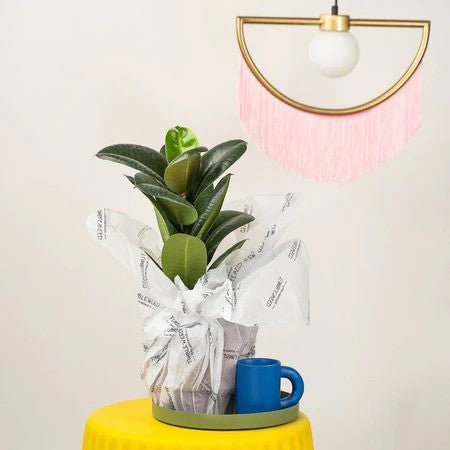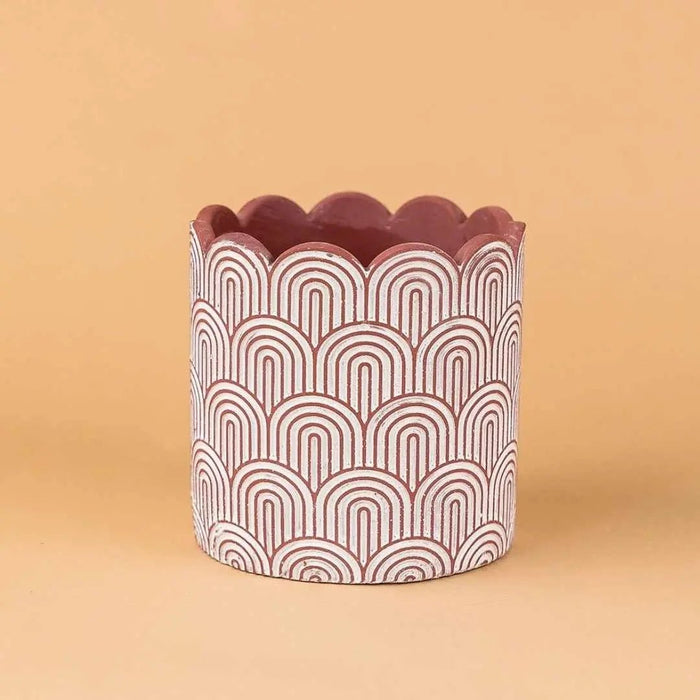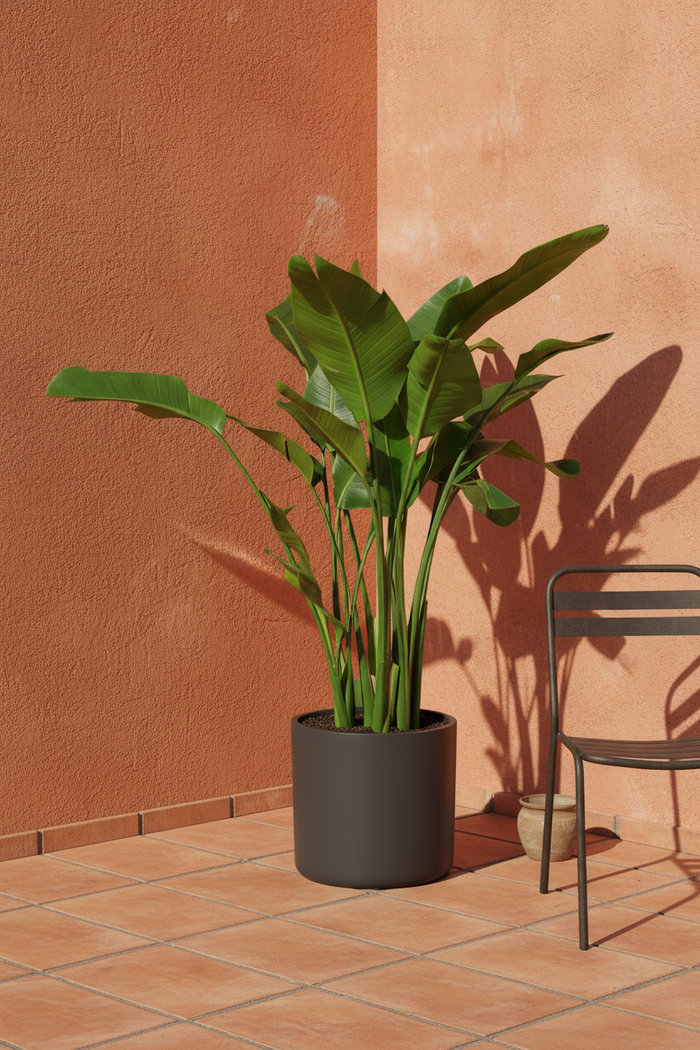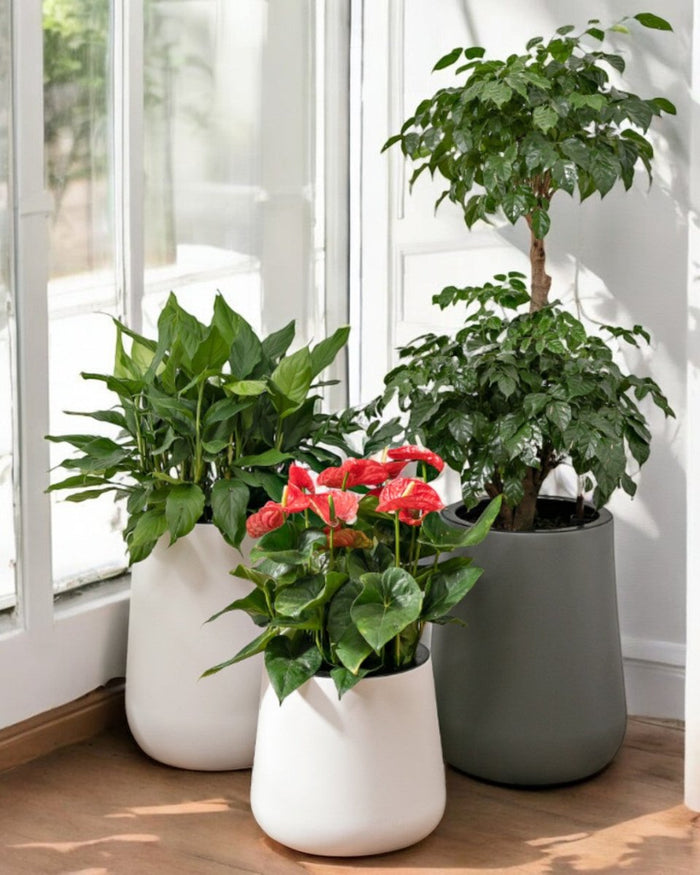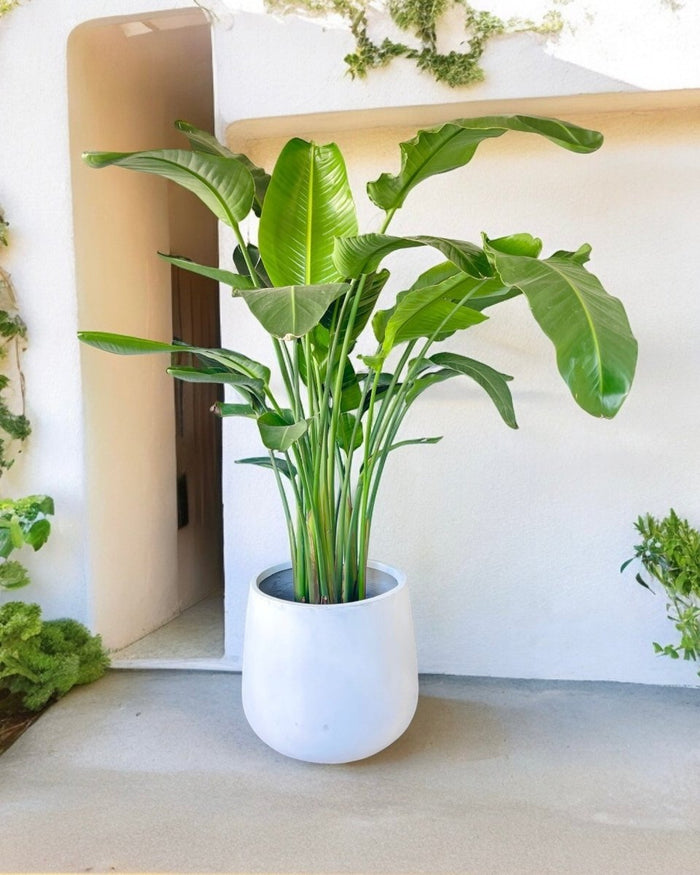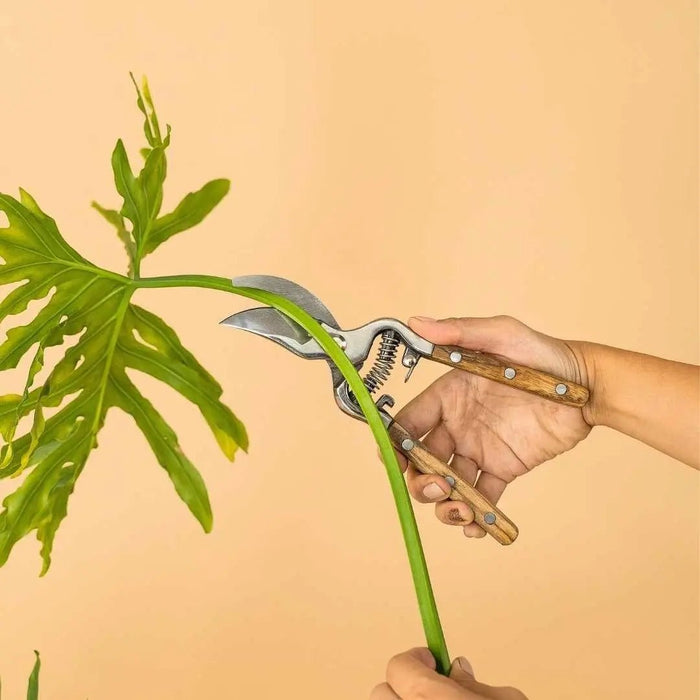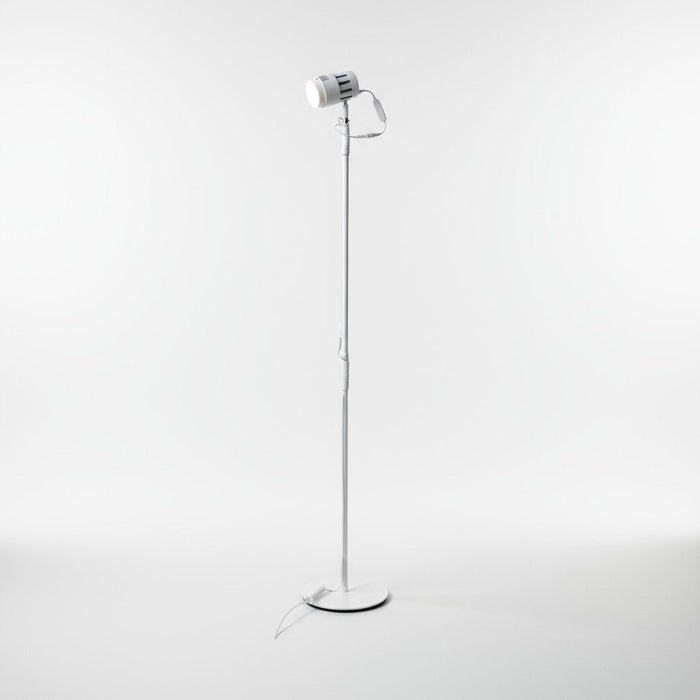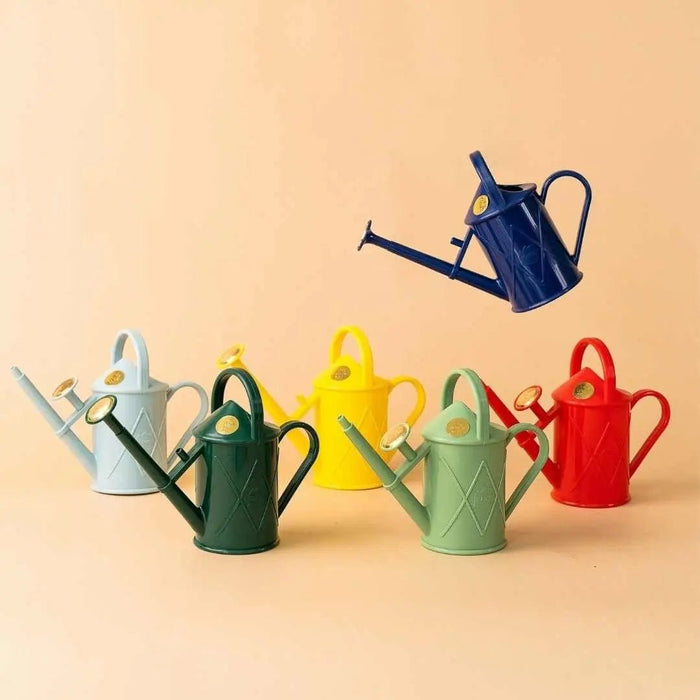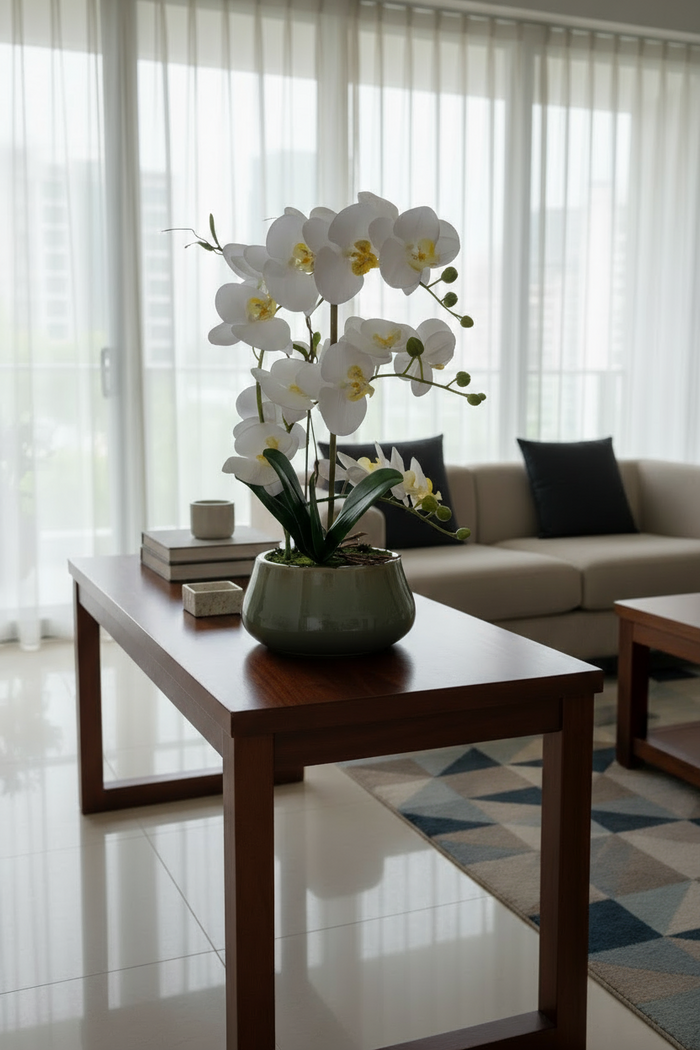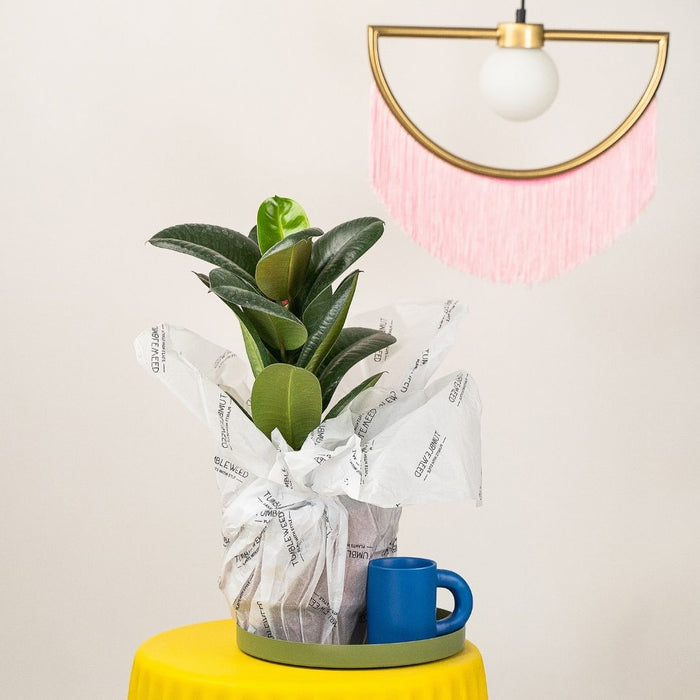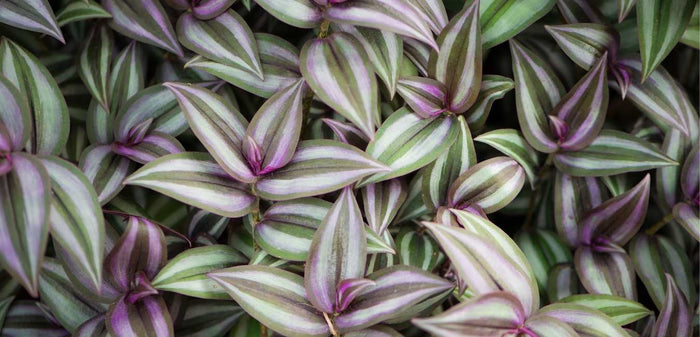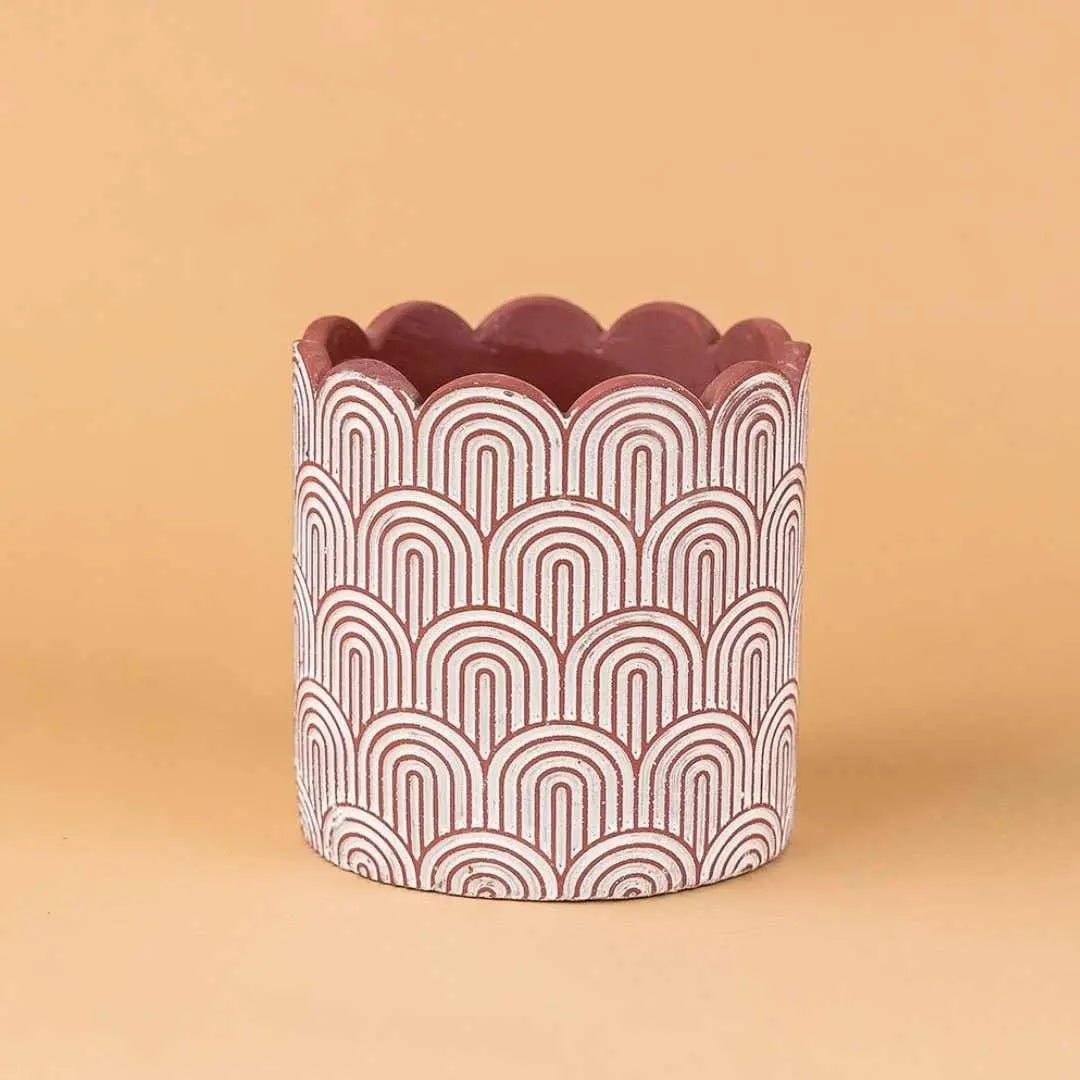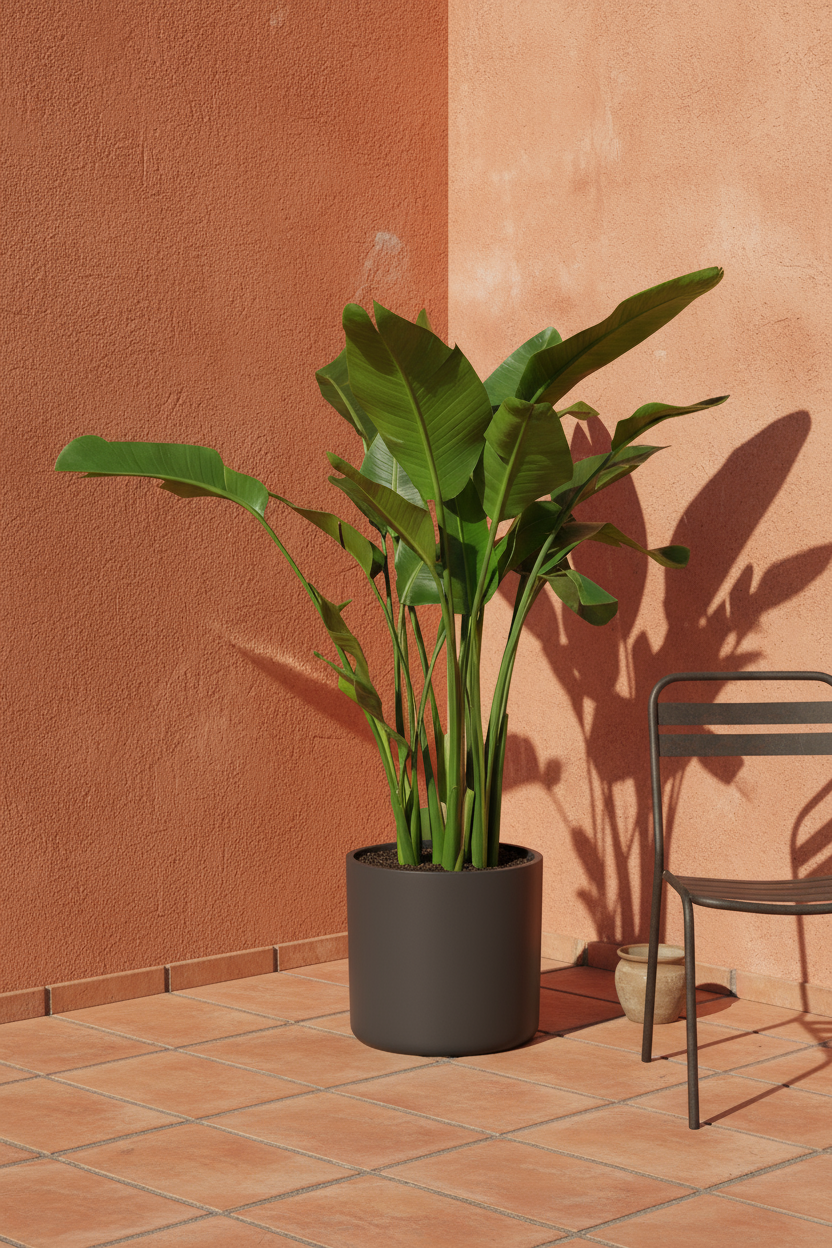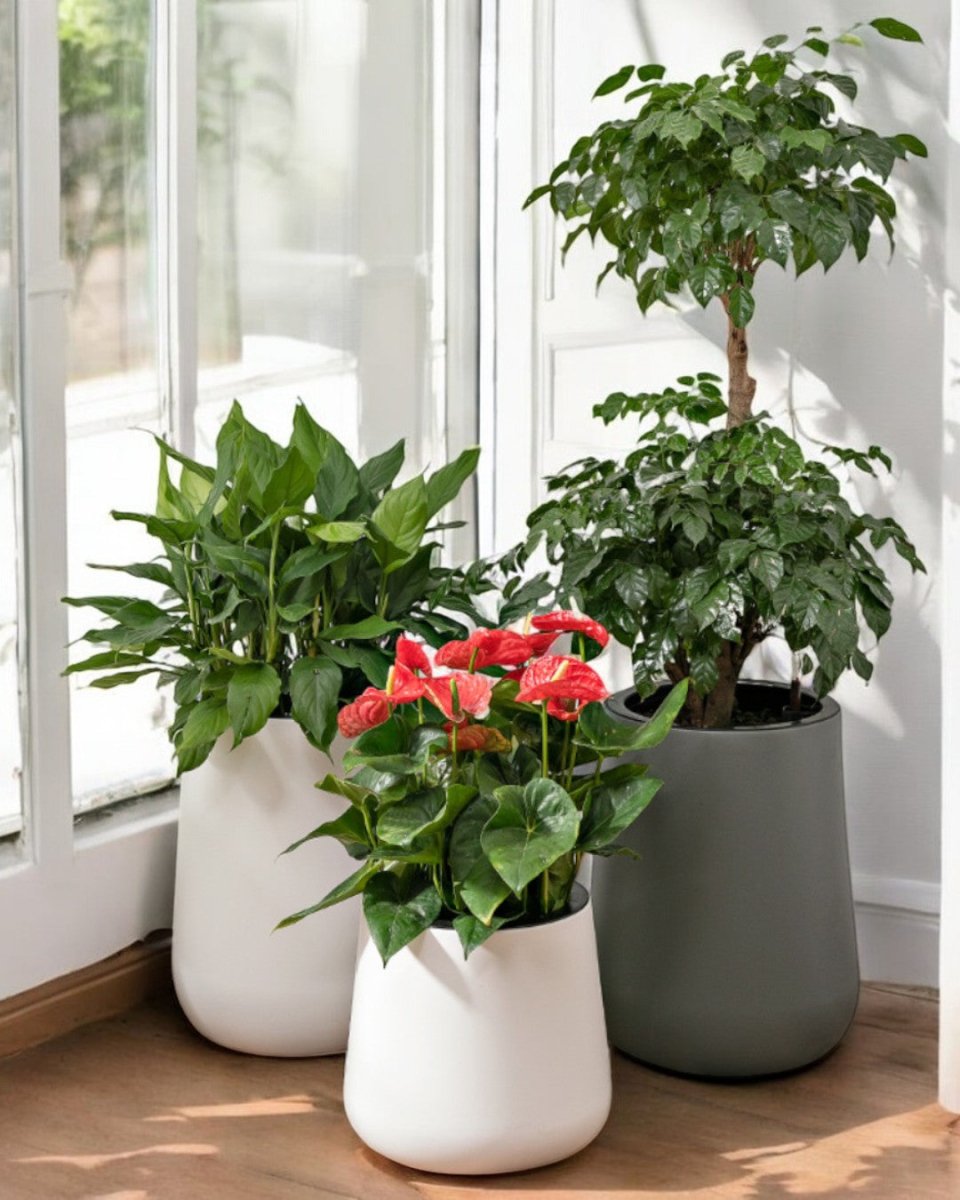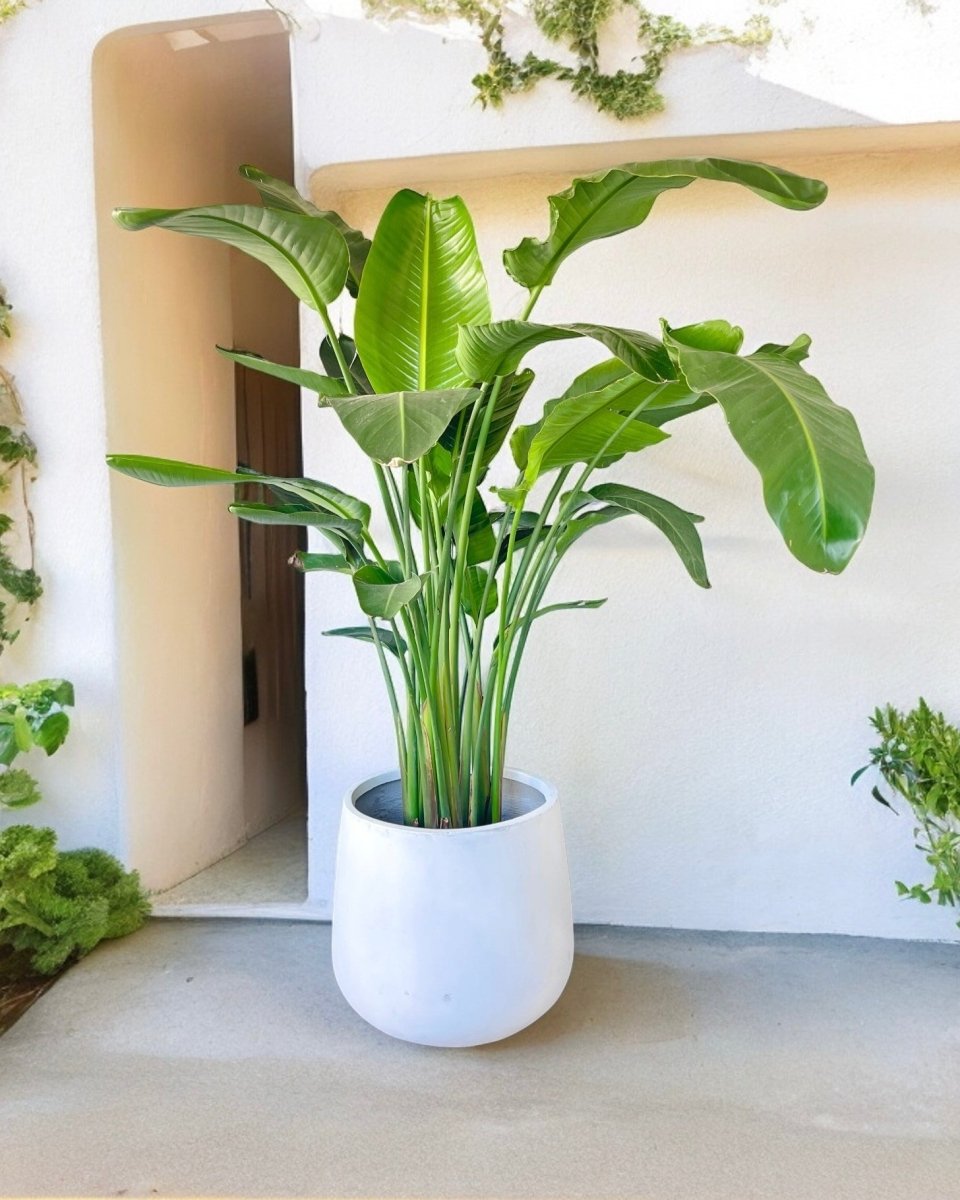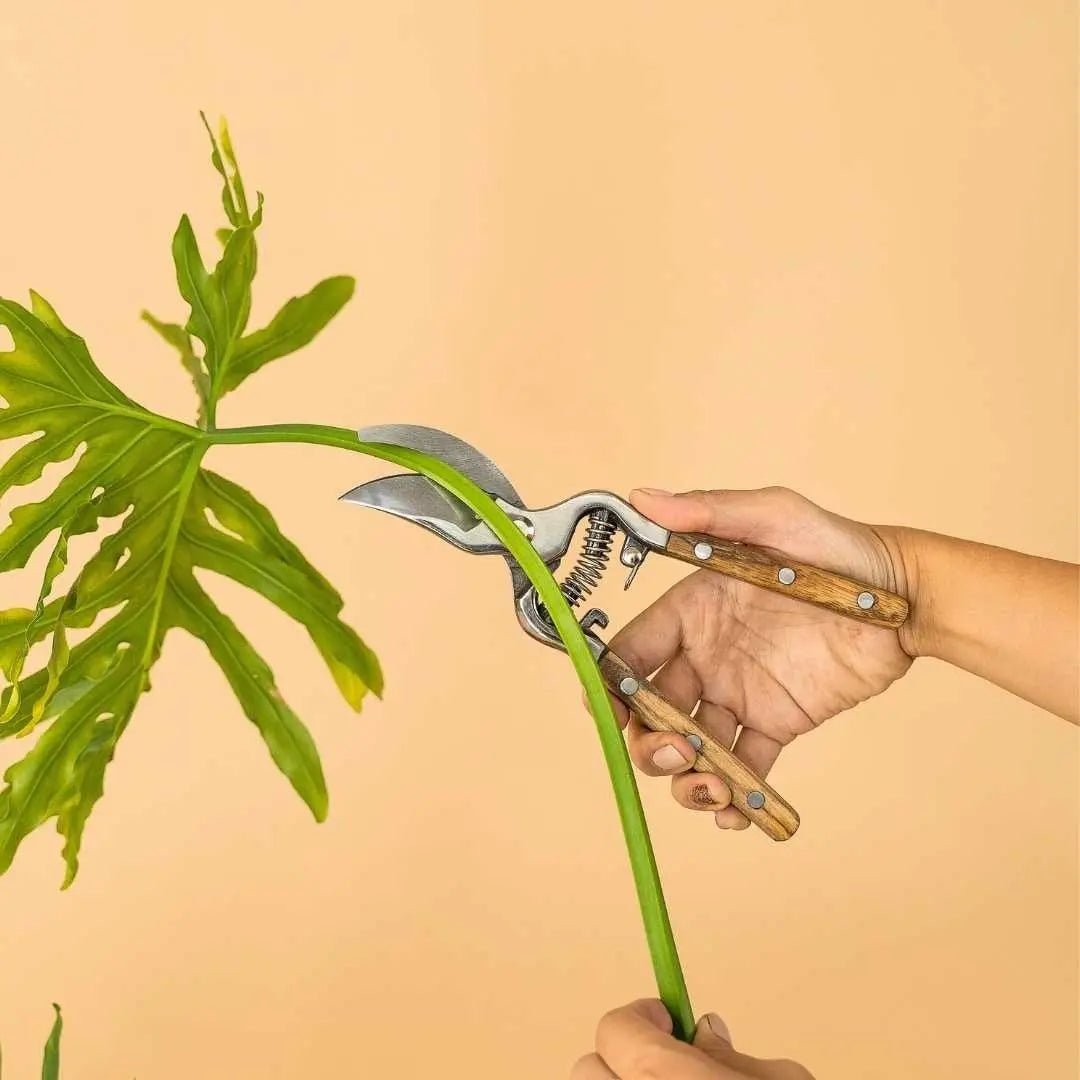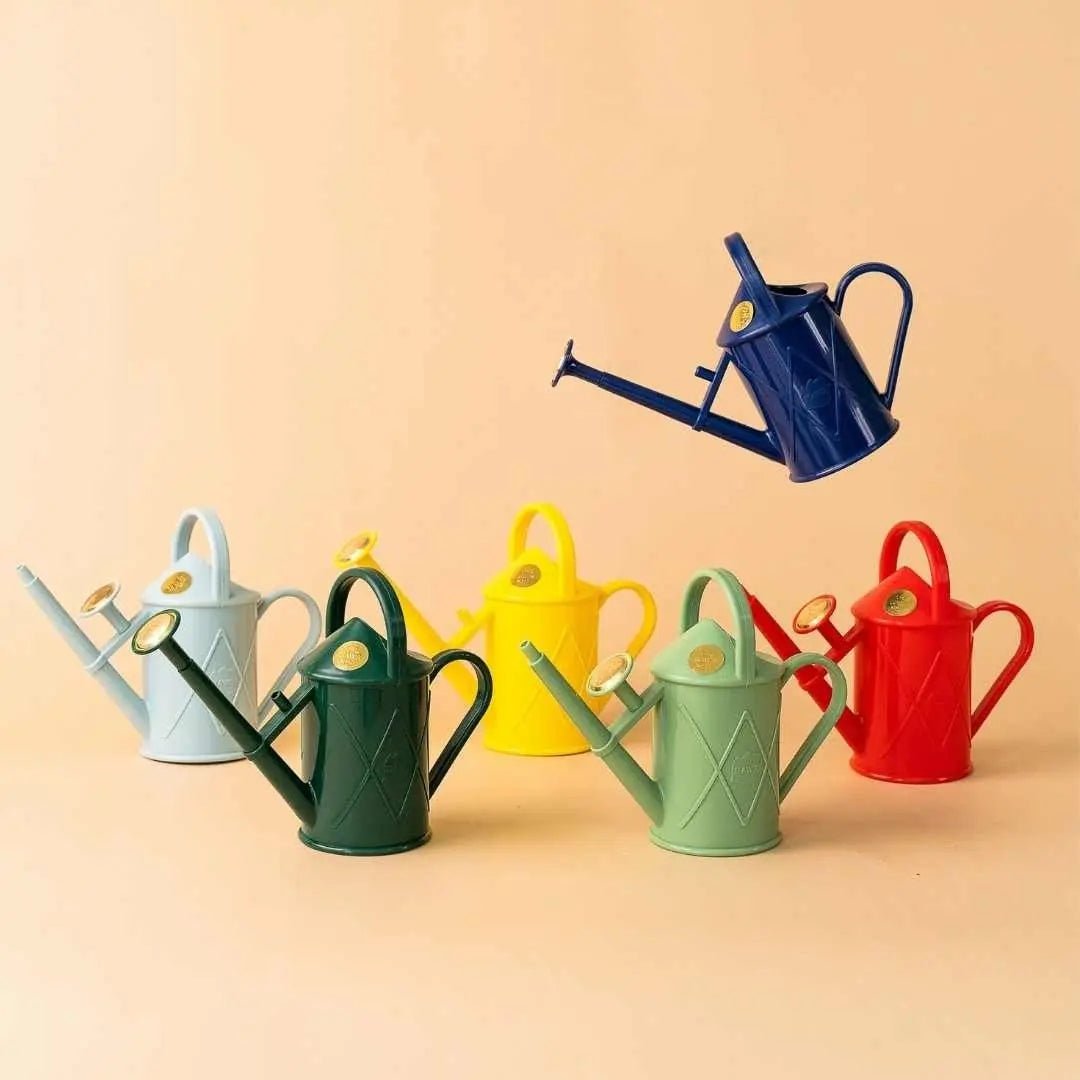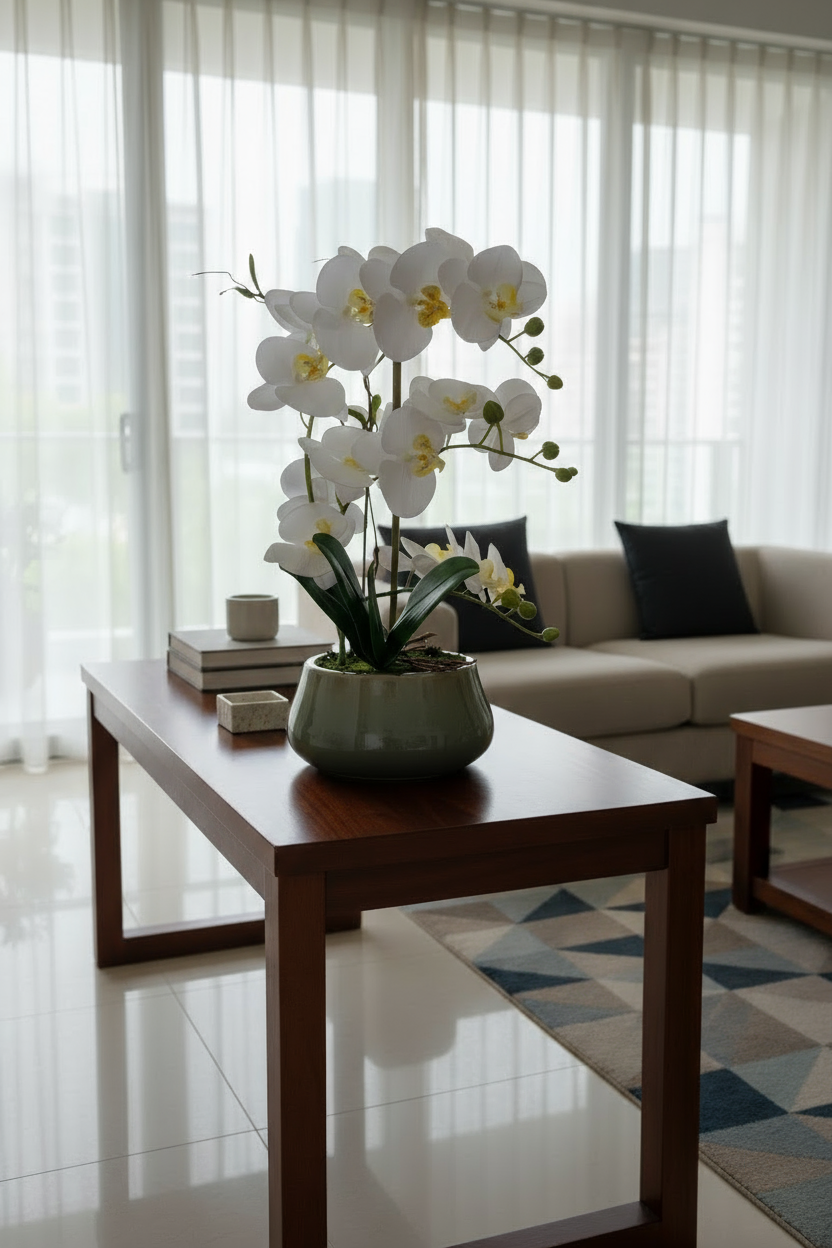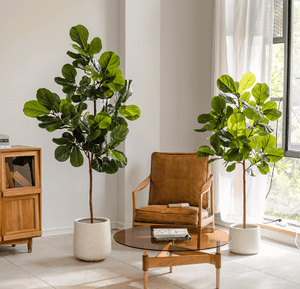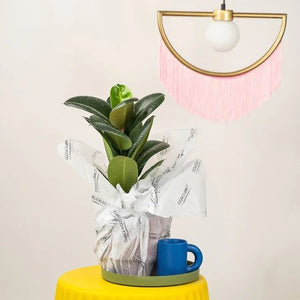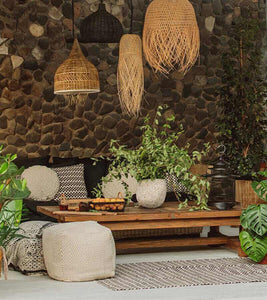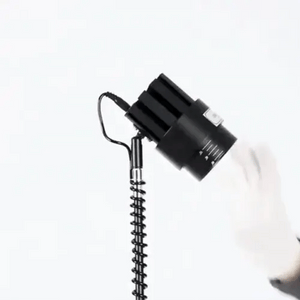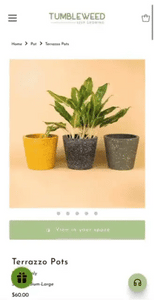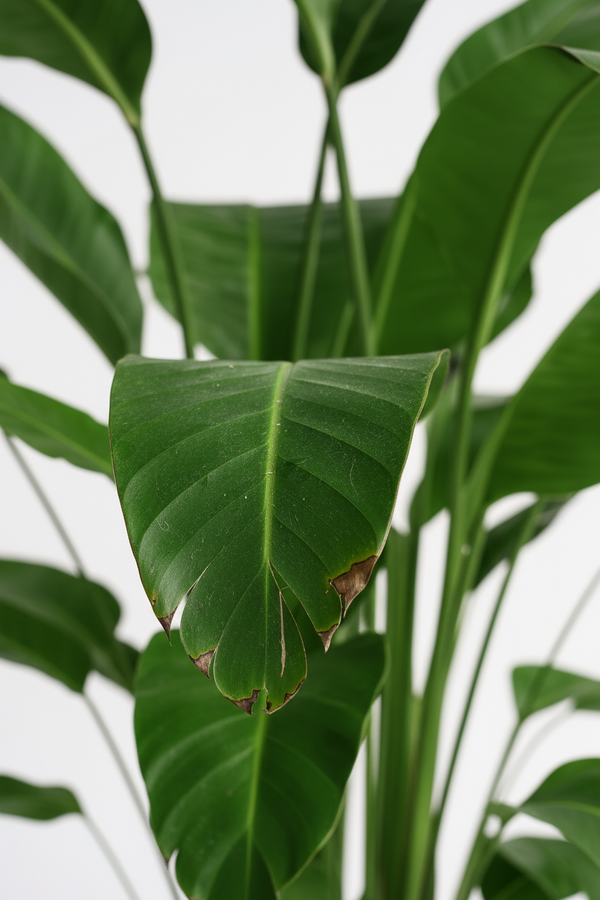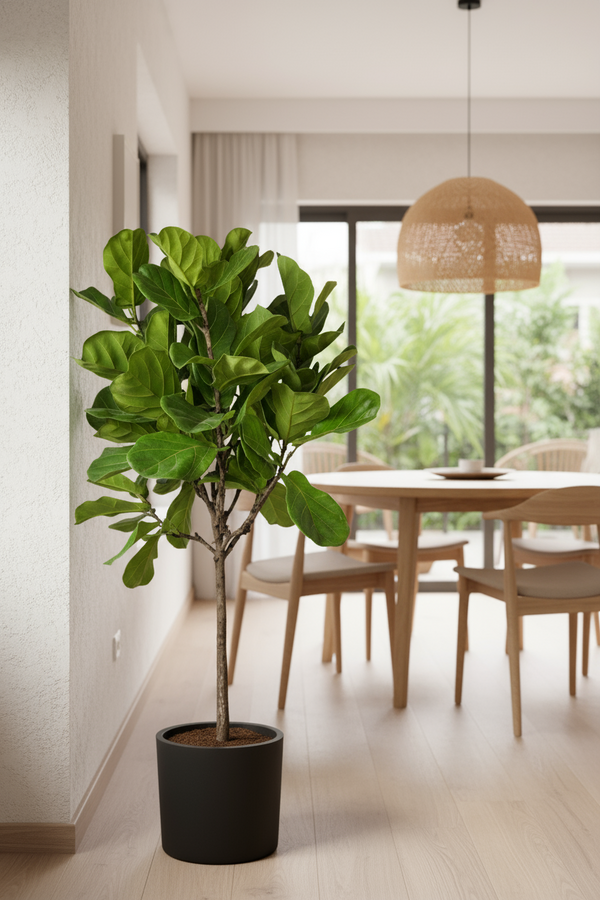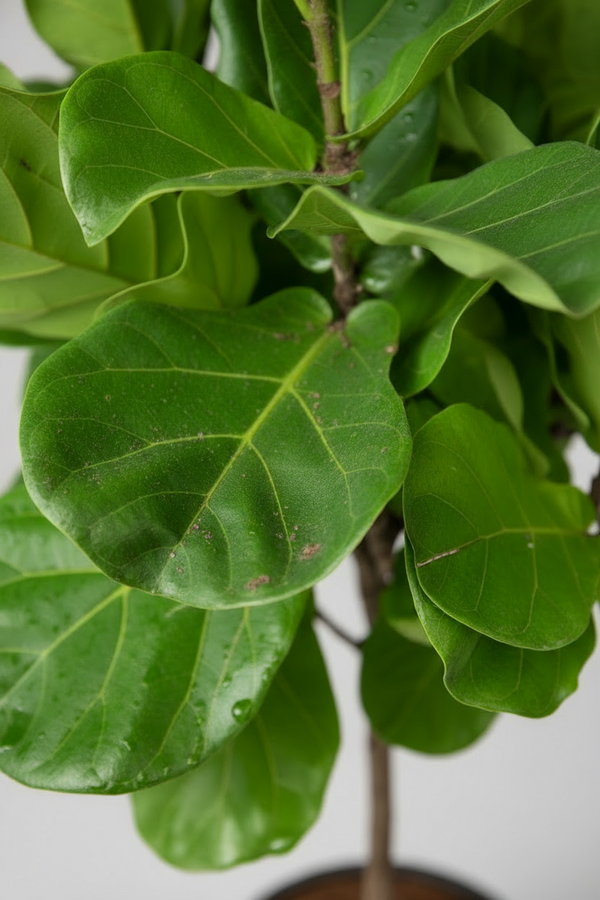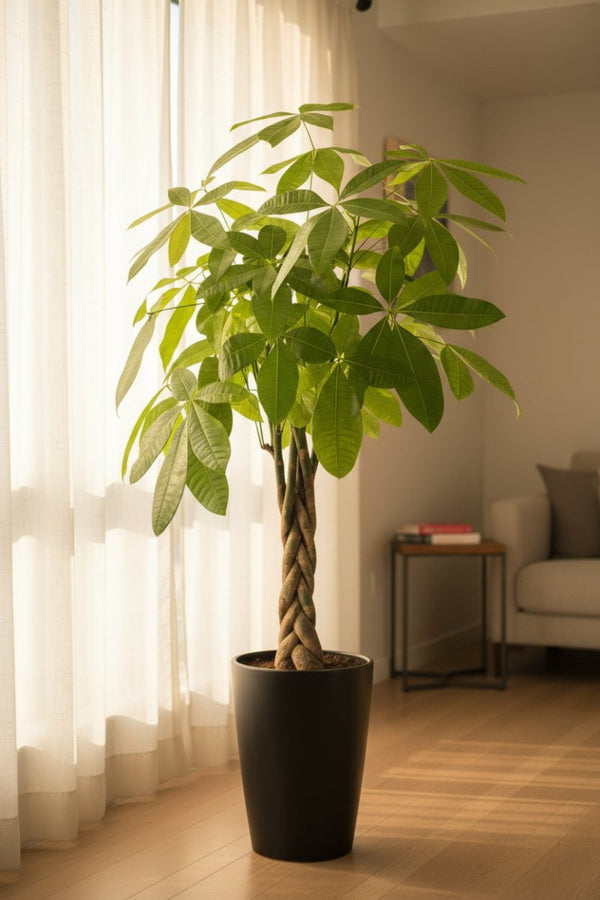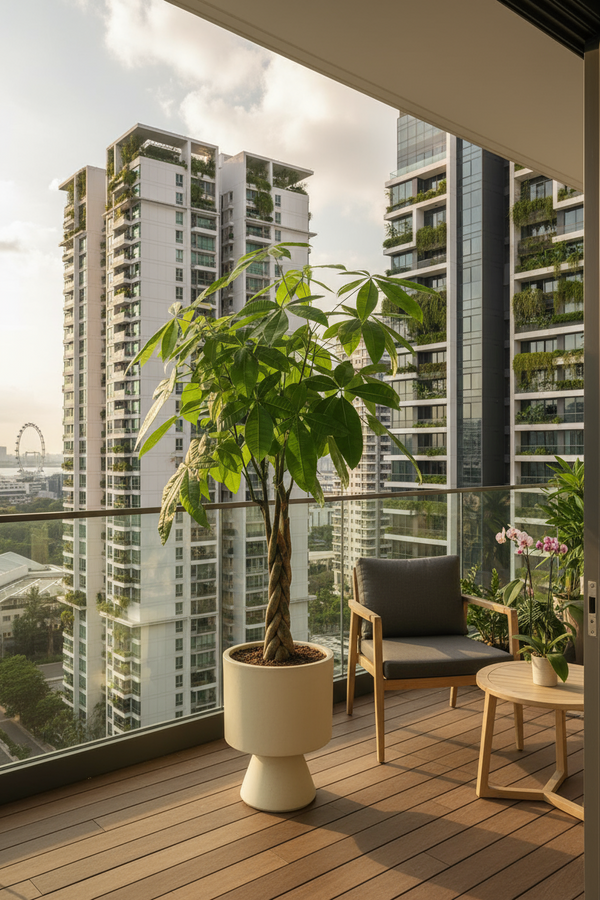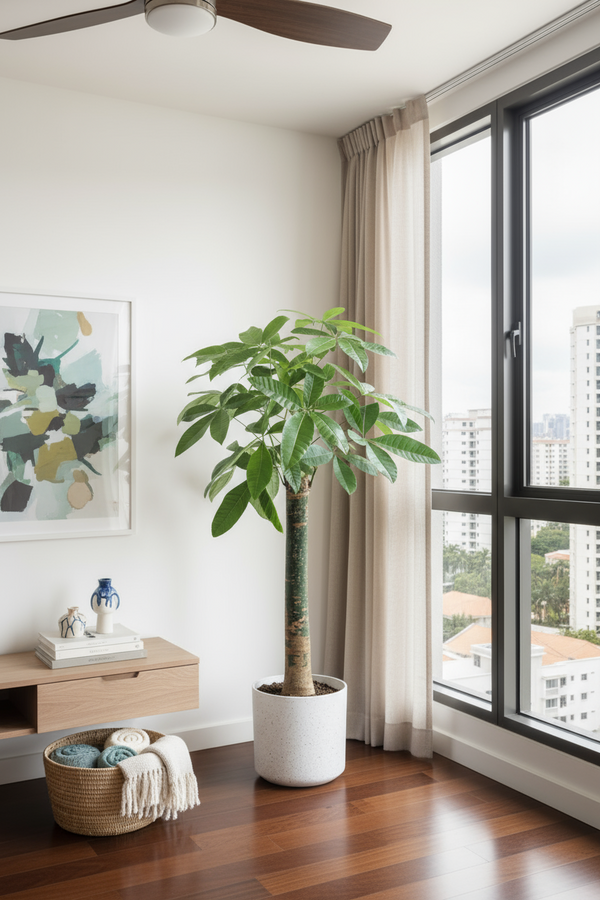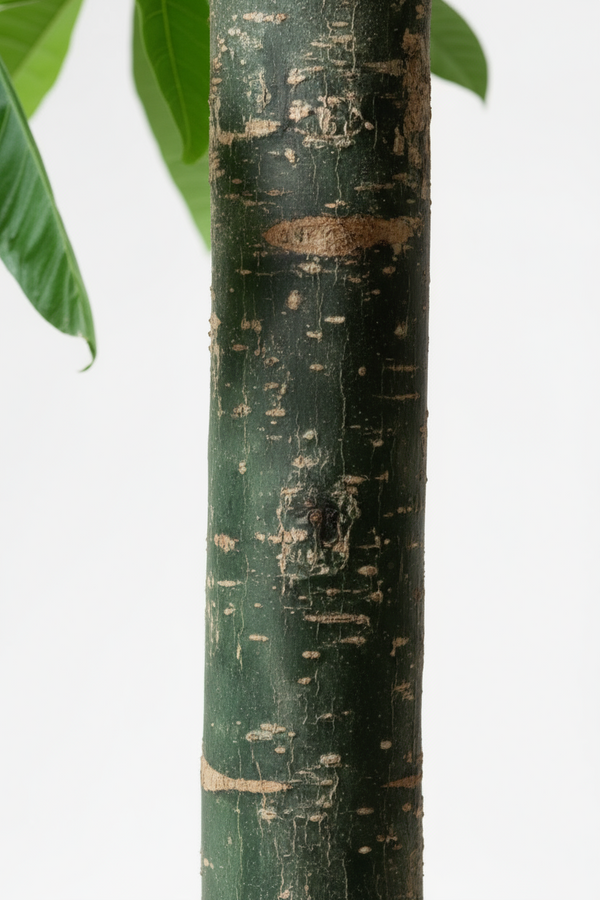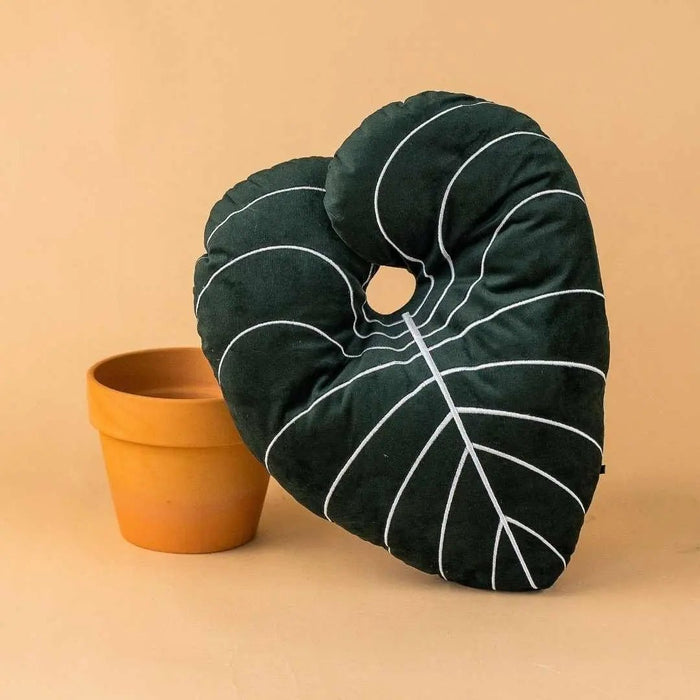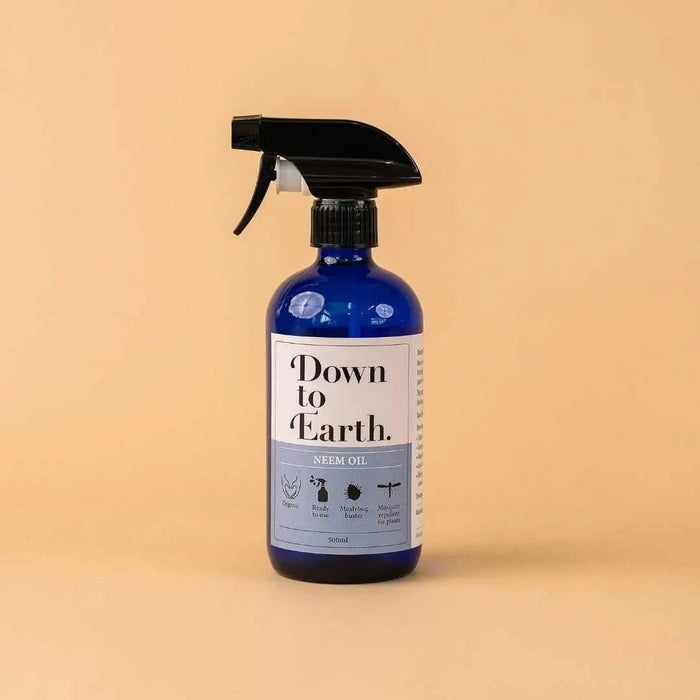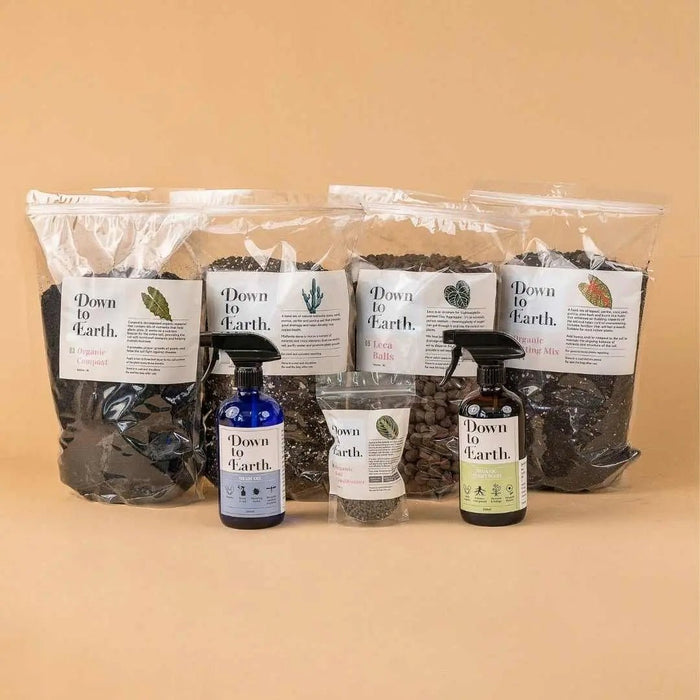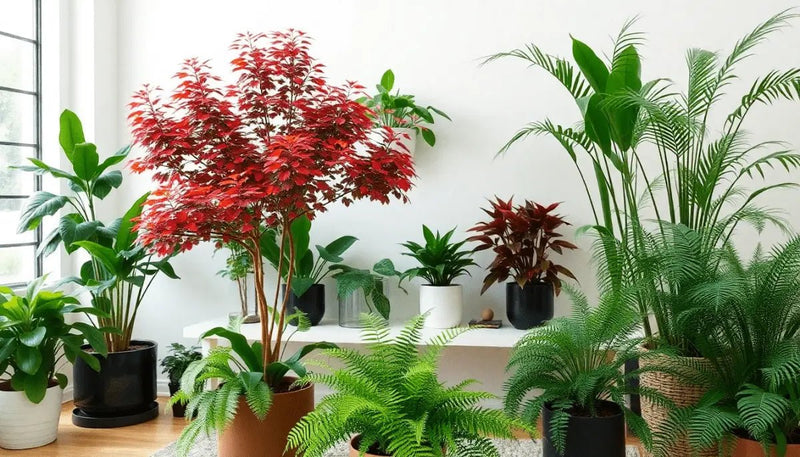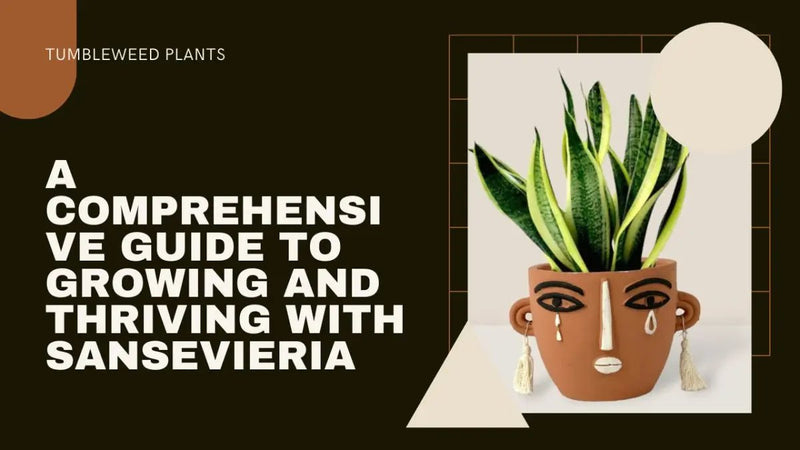The Ultimate Guide to Caring for Indoor Houseplants
Posted on March 22 2025
Introduction to Indoor Houseplants: Why They Matter
Indoor houseplants serve purposes that go far beyond mere decoration. They play an essential role in fostering a healthier indoor environment, creating aesthetic appeal, and positively impacting mental well-being. While they may appear to be simple additions to a home or office space, their significance lies in their ability to transform environments and create a connection between humans and nature.
Benefits of Indoor Houseplants
Indoor houseplants improve air quality by absorbing carbon dioxide and releasing oxygen. Some species, such as spider plants, peace lilies, and snake plants, also filter out harmful toxins and pollutants, including formaldehyde and benzene, commonly found in household products. This purification process contributes to fresher, cleaner air, promoting a healthier living space.
Houseplants also offer psychological benefits. Research has demonstrated that exposure to natural elements, even indoors, reduces stress levels, enhances mood, and boosts concentration. For individuals who experience seasonal affective disorder or work in confined spaces, the presence of greenery can foster resilience and a sense of tranquility.
Aesthetic Contribution and Design Impact
From minimalist arrangements to lush corners full of greenery, indoor plants provide a versatile design element suitable for virtually any interior style. They soften architectural features, add texture, and create focal points in rooms. Whether small potted succulents or large leafy varieties like monstera deliciosa, plants inject life and vibrancy into spaces without overwhelming them.
Sustainability and Connection to Nature
In an increasingly urbanized world, indoor houseplants help bridge the gap between artificial spaces and the natural environment. Caring for plants cultivates mindfulness and promotes sustainable living practices, reminding individuals of the importance of ecosystems and biodiversity. This effort, though small, contributes to a global culture that values environmental stewardship.
Indoor houseplants, in essence, are more than hobbies or decorative elements—they represent an opportunity to build healthier living spaces and foster mental well-being. Understanding their importance is the first step in incorporating them thoughtfully into different settings.
Choosing the Right Indoor Plants for Your Space
Selecting indoor plants requires careful consideration of environmental factors, plant maintenance needs, and personal preferences. Different plants thrive under varying conditions, so matching the plant’s requirements with the characteristics of the space is essential for success.
Begin by assessing the lighting in the designated area. Some plants, such as succulents and cacti, require bright, direct sunlight, while others, like pothos and snake plants, can adapt to low-light conditions. Evaluate the natural light exposure throughout the day and identify spaces most conducive to specific plant types. For areas with limited sunlight, consider species labeled as “low-light tolerant” to ensure healthy growth.
Humidity is another critical factor when choosing indoor plants. Tropical plants, such as peace lilies, ferns, and calatheas, prefer higher humidity levels and thrive in warm, moist environments. Conversely, plants like sansevieria and ZZ plants tolerate fluctuating humidity levels, making them suitable for dry indoor climates. Consider placing moisture-loving plants in areas like kitchens or bathrooms where humidity levels are naturally higher.
When assessing plant size, evaluate the available space and how much room the plant can occupy. Small plants, such as air plants or baby rubber plants, are ideal for desks and shelves, while larger species, such as fiddle-leaf figs or monstera, can serve as statement pieces in living rooms or entryways. Additionally, consider the plant’s growth rate to ensure it won’t outgrow its intended space over time.
Finally, factor in maintenance requirements. For beginners or those with limited time, low-maintenance options such as spider plants or philodendrons are excellent choices. Individuals with busier lifestyles may benefit from hardy plants that can withstand occasional neglect. Matching plant care needs with personal schedules helps ensure long-term success and enjoyment.
Understanding Light Requirements for Houseplants
Light is a critical factor in the growth and overall health of houseplants as it drives the process of photosynthesis, the mechanism plants use to produce energy. Each plant species has unique light preferences, and understanding these differences is essential for cultivating thriving indoor greenery.
Houseplants can generally be categorized into three light requirement groups: low, medium, and high light. Low-light plants, such as pothos and snake plants, thrive in indirect light or shaded areas. They can tolerate areas with minimal sunlight, making them ideal for rooms with no windows or dim corners. On the other hand, medium-light plants, including peace lilies and philodendrons, flourish when exposed to indirect but bright light, such as near east- or west-facing windows. Lastly, high-light plants like succulents and cacti require direct sunlight for several hours a day, typically needing placement near south-facing windows to access ample natural light.
Adequately assessing the natural light in a room is crucial to matching houseplants with suitable conditions. Natural light can vary based on window orientation, the time of year, and the presence of obstructions like trees or buildings outside. Balancing these factors ensures houseplants receive consistent light exposure. For areas lacking sufficient natural light, grow lights serve as a reliable alternative. These artificial lights replicate the natural light spectrum to support photosynthesis.
Rotating plants periodically can also help ensure even growth by distributing light exposure across their foliage. Monitoring plants for signs of inadequate or excessive light, such as leggy growth or scorched leaves, provides vital clues to adjust their placement. Proper alignment of light conditions with a plant’s specific needs fosters healthy growth and prevents common stress-related issues.
Watering Practices: How Much Is Too Much?
Water is vital to a houseplant’s survival, yet improper watering is one of the most common causes of plant decline. Overwatering is particularly damaging as it drowns roots, depriving them of essential oxygen and leading to root rot. Conversely, underwatering can cause plants to dry out and become stressed, resulting in wilting or leaf drop.
To determine the optimal amount of water for a specific plant, it is essential to consider factors such as the plant species, pot size, type of soil, and environmental conditions like light and humidity. For instance, succulents and cacti generally require less water, while tropical plants often need more frequent hydration to simulate their native environment.
One effective method to avoid overwatering is the “finger test.” In this approach, an individual inserts their finger into the soil up to about two inches. If the soil feels dry at this depth, it is time to water. Additionally, pots with drainage holes are crucial for allowing excess water to escape, preventing water stagnation at the bottom.
Signs of overwatering include yellowing leaves, a musty odor, or soggy soil that remains persistently wet. Conversely, underwatered plants typically show dry, brittle leaves and soil that pulls away from the pot edges.
Regularly observing a plant’s appearance and the moisture level of the soil offers valuable insight into watering needs. Adjustments should also be made seasonally, as plants typically require more water during active growth periods in spring and summer compared to the slower growth phases of fall and winter.
Maintaining a balance of moisture ensures healthy roots and flourishing foliage, fostering a thriving indoor garden.
The Role of Humidity in Houseplant Health
Humidity plays a critical role in maintaining the health of indoor houseplants, as it directly influences their ability to thrive. Most houseplants originate from tropical and subtropical regions, where high humidity is prevalent. Recreating similar conditions indoors is essential to ensure their proper growth and prevent common problems such as wilting, browning leaves, or stunted development.
Why Humidity Matters for Houseplants
Plants lose water through a process called transpiration, where moisture evaporates from their leaves. In low-humidity environments, this process can accelerate, forcing plants to draw excessive water from the soil. Over time, this imbalance can lead to dehydration and damage to the plant’s tissues. For humidity-loving species such as ferns, orchids, or calatheas, prolonged exposure to dry air can be particularly detrimental. Conversely, too much humidity can foster fungal growth and diseases, making it equally important to maintain an optimal range.
How to Manage Humidity Indoors
Several strategies can help create an ideal humidity level indoors:
- Using Humidifiers: A dedicated plant humidifier can consistently provide moisture to the air, mimicking natural conditions.
- Grouping Plants Together: Close proximity allows plants to share the moisture they release into the air, raising localized humidity.
- Mist Spraying: Lightly misting plant leaves helps combat dry air conditions but should not be overdone to avoid mold.
- Pebble Trays: Placing plants on trays filled with water and pebbles allows for evaporation, increasing humidity around the plant.
Recognizing Symptoms of Humidity Stress
Signs of low humidity include dry leaf edges, curling leaves, and slowed growth. On the other hand, excessively high humidity may result in leaf yellowing, fungal infections, or a musty odor. Observing these indicators enables swift adjustments to avoid long-term damage.
Understanding and managing humidity appropriately ensures houseplants maintain their vitality and display optimal beauty indoors.
Soil and Repotting Tips for Indoor Plants
Choosing the right soil and understanding when and how to repot indoor plants are essential components of maintaining their health. Not all indoor plants thrive in the same type of soil; soil consistency, drainage, and nutrient content significantly affect plant growth.
Selecting the Right Soil
Indoor plants generally require well-draining soil to prevent water from accumulating around their roots. Many plants, such as succulents and cacti, need a sandy, aerated potting mix, while tropical plants like pothos or ferns thrive in rich, moisture-retentive soil. Additionally, plants such as orchids demand specialty mixes that include bark chips for adequate air circulation. Using generic garden soil is discouraged, as it compacts over time, leading to poor drainage and root rot.
For nutrient support, incorporating organic compost or slow-release fertilizers into the soil mix can enhance nutrient availability. Pre-mixed indoor potting soils often come with added fertilizers, but for sensitive plants, opt for soils without chemical additives to avoid over-fertilization.
Understanding When to Repot
Repotting is necessary to allow the plant room to grow, replace depleted soil, or address root health issues. Signs indicating a need for repotting include roots outgrowing drainage holes, compacted soil, or stunted growth. Typically, most indoor plants require repotting every one to two years, although slower-growing species may thrive much longer in the same pot.
The Repotting Process
To minimize stress to the plant during repotting, begin by selecting a pot that is one to two inches larger in diameter than the current container. Ensure it has proper drainage holes to prevent water buildup. Gently remove the plant from its current pot, loosen the root ball, and trim away any circling or damaged roots. Position the plant in the center of the new pot, filling the surrounding space with fresh, appropriate soil. Water thoroughly after repotting to settle the soil and hydrate the plant. Avoid fertilizing immediately post-repotting, as this may overstimulate stressed roots.
Proper soil selection and periodic repotting are fundamental practices for supporting robust indoor plant health and longevity.
Feeding Your Plants: Fertilizers and Nutrient Essentials
Healthy indoor plants require not only light and water but also a balance of essential nutrients to thrive. Fertilizers play a central role in replenishing the nutrients that your plants utilize over time, especially in confined pots where soil resources are limited. Understanding the nutritional needs of your plants and the various types of fertilizers available can significantly enhance their growth and vitality.
Plants primarily require three macronutrients: nitrogen (N), phosphorus (P), and potassium (K), often referred to as NPK. Nitrogen supports lush, green foliage, phosphorus enhances root development and flower production, while potassium promotes overall plant health and disease resistance. Additionally, plants benefit from secondary nutrients like calcium, magnesium, and sulfur, as well as trace elements such as iron, zinc, and manganese.
There are several types of fertilizers to consider. Liquid fertilizers allow for quick nutrient absorption and are ideal for plants needing immediate care. Slow-release fertilizers dissolve gradually, providing consistent nutrition over weeks or months. Organic fertilizers, derived from natural sources like compost or manure, improve soil quality and are environmentally friendly. Synthetic fertilizers, on the other hand, deliver precise quantities of nutrients but may lack soil-enhancing properties.
To ensure effective feeding, the frequency and amount of fertilizer application should match the plant species and its growth stage. A plant going through its active growing phase typically requires more frequent feeding, while dormant plants need little to no fertilizer. Over-fertilizing can lead to salt buildup, root damage, or even plant death, so following the product’s instructions is critical. Regular assessment of soil conditions and leaf health helps fine-tune the feeding regimen.
Preventing and Treating Common Houseplant Pests
Houseplants are vulnerable to a variety of pests, which can affect their overall health and growth. Understanding how to prevent infestations and address them effectively is crucial to maintaining thriving indoor greenery.
Common Houseplant Pests
Several pests are frequently found on indoor plants. These include:
- Spider Mites: Tiny arachnids that cause speckled leaves and webbing, often noticeable in dry conditions.
- Mealybugs: White, cotton-like spots on stems and leaves indicate mealybug infestations.
- Aphids: Small, pear-shaped insects that aggregate on new growth and excrete sticky honeydew.
- Scale Insects: Hard or soft brown scales attached to leaves and stems that are difficult to spot.
- Fungus Gnats: Small black flies that thrive in overly moist soil, often mistaken for fruit flies.
Preventing Pest Infestations
Proactive measures can significantly reduce the likelihood of pests. Key preventative practices include:
- Inspect New Plants: Always check for signs of pests before bringing new plants indoors to avoid introducing infestations.
- Maintain Cleanliness: Regularly clean leaves and prune dead growth to create an unfavorable environment for pests.
- Avoid Overwatering: Pest populations like fungus gnats thrive in soggy soil; ensure proper drainage and water moderation.
- Enhance Humidity: Spider mites prefer dry environments; maintaining adequate indoor humidity reduces susceptibility.
- Quarantine New Arrivals: Keep newly acquired plants separate from others for a few weeks to monitor for hidden pests.
Treating Infestations
If pests are detected, prompt action is essential to mitigate damage. Effective treatment options include:
- Manual Removal: Use a cotton swab or soft cloth dipped in rubbing alcohol to remove pests like mealybugs and scale insects.
- Rinsing Leaves: For spider mites and aphids, spray leaves with water to dislodge these pests.
- Natural Remedies: Neem oil or insecticidal soap can eliminate pests without harming the plant or surrounding environment.
- Soil Treatments: Allow soil to dry out slightly and use sticky traps to control fungus gnats.
- Isolation: Move infested plants away from others to prevent the spread of pests during treatment.
Monitoring Post-Treatment
After treating an infestation, closely monitor plants for recurrence. Regular inspections and maintenance will ensure a pest-free environment for ongoing growth and vitality.
Dealing with Common Diseases in Indoor Plants
Indoor plants can fall victim to various diseases that hinder their growth and health. Proper identification and timely intervention are crucial to prevent irreversible damage. Understanding the common diseases affecting houseplants helps in their effective management.
1. Root Rot: Root rot often arises from overwatering or poor drainage, leading to waterlogged soil that suffocates roots and encourages fungal growth. Symptoms include yellowing leaves, wilted appearance, and mushy roots. To manage root rot, one should remove the plant from its pot, trim away infected roots, and repot it in fresh, well-draining soil. Adjusting the watering schedule can help prevent recurrence.
2. Powdery Mildew: This fungal infection appears as a white, powdery coating on leaves, stems, and flowers. It thrives in warm, humid environments with poor air circulation. Affected plants should be placed in areas where air moves freely. Treating the disease involves using fungicides or applying natural remedies like a mixture of water and baking soda. Pruning heavily infected parts is also recommended.
3. Leaf Spot Diseases: Brown or black spots on leaves, often surrounded by yellow halos, indicate leaf spot. Bacteria or fungi are common culprits. Removing affected leaves promptly helps curb the spread. Ensuring leaves are dry and avoiding overhead watering can reduce future occurrences. Antifungal sprays are effective for persistent issues.
4. Pest-Related Secondary Infections: Pests like aphids, mealybugs, or scale often create openings for infections. Regular inspection and pest control measures, using insecticidal soap or neem oil, prevent diseases associated with pest infestations.
Good hygiene practices, such as sterilizing gardening tools and avoiding overcrowding, are essential for disease prevention. Providing the right balance of light, humidity, and water ensures healthier plants less prone to infections.
Seasonal Care: Adapting to Temperature Changes
Indoor houseplants often require adjustments in care routines as seasons change, ensuring they thrive year-round. Seasonal shifts can influence factors such as temperature, humidity, light exposure, and watering needs, all of which play pivotal roles in plant health.
Managing Temperature Fluctuations
Most houseplants prefer stable temperatures ranging from 65°F to 75°F. During colder months, avoid placing plants near drafty windows, exterior doors, or heating vents, as these areas can cause abrupt temperature fluctuations. Similarly, in summer, keep plants away from direct air conditioning airflow, which can stress or dry them out.
Light Adjustments
As days grow shorter in winter, plants typically receive less sunlight. To compensate, reposition them closer to windows or consider using artificial grow lights. In summer, stronger sunlight may necessitate moving certain plants to areas with indirect light to prevent leaf burn, especially for low-light species like pothos or ferns.
Humidity Levels
Winter indoor heating often reduces air humidity, which can lead to dry leaves. To maintain adequate moisture levels, use a humidifier or place a tray of water near plant groupings. Alternatively, misting leaves works for some tropical species. Summertime usually provides higher natural humidity, but monitor plants in air-conditioned spaces.
Adjusting Watering Routines
Cooler temperatures and reduced sunlight during fall and winter slow plant growth, meaning they generally require less water. Overwatering during this period can lead to root rot. Conversely, in spring and summer, when plants grow more actively, watering should be more frequent. Always allow the topsoil to dry slightly before watering to prevent excess moisture buildup.
Monitoring Fertilization
Plants often enter a dormant phase during the cooler months, reducing their need for fertilization. Avoid overfeeding during this time. As warmer weather returns, resume regular feeding to support new growth.
By tailoring plant care to seasonal changes, their overall health and vibrancy can be maintained effectively.
Pruning and Maintenance for Long-Term Growth
Regular pruning and systematic maintenance are essential practices for ensuring the long-term health and vitality of indoor houseplants. Proper techniques allow plants to thrive by promoting new growth, preventing overcrowding, and maintaining an aesthetically pleasing shape.
Benefits of Pruning
Pruning stimulates a plant’s ability to produce fresh foliage and regulates its overall size for indoor spaces. It helps remove dead or yellowing leaves, which can otherwise drain energy from the plant. In addition to improving its appearance, pruning can prevent the spread of diseases by eliminating infected parts before they become a systemic issue.
Tools Needed for Pruning
Maintaining plants effectively requires the use of proper tools. Commonly recommended items include:
- Sharp shears or scissors: For cutting stems cleanly without causing damage to adjacent areas.
- Gloves: To avoid potential skin irritation from sap or spines.
- Disinfectant wipes or solution: For cleaning tools between uses to prevent cross-contamination of diseases.
How to Prune Indoor Plants
When pruning, it is important to:
- Assess the plant’s structure by observing areas of overcrowding, damage, or overly elongated stems.
- Cut above a node, the small bump on the stem where leaves or branches typically emerge, to encourage healthy new growth.
- Remove older leaves near the base to redirect nutrients to younger, more vibrant sections.
- Trim overgrown stems to maintain balanced proportions conducive to steady growth.
Common Maintenance Tips
Apart from pruning, general maintenance techniques can sustain healthy plants:
- Monitor for pests like spider mites and scale, which can inhibit growth if left unchecked.
- Rotate plants every few weeks to promote even exposure to light.
- Dust leaves gently using a damp cloth to optimize photosynthesis.
- Refresh soil periodically to prevent nutrient depletion and repot into larger containers as necessary.
Studies have shown that proper pruning and maintenance routines can extend the lifespan of plants significantly, making them a rewarding addition to any indoor space.
Creating the Ideal Environment for Thriving Houseplants
Maintaining a thriving indoor garden requires careful attention to environmental factors that influence plant health. Houseplants depend on a balance of light, humidity, temperature, airflow, and soil conditions to grow optimally. Ensuring these elements align with the specific needs of individual plants is crucial for their vitality.
Light Requirements
Light is one of the most critical factors for houseplant health, as it fuels photosynthesis. Consider the differing light preferences of plants.
- Low-light plants such as snake plants and pothos thrive in shaded or indirect light areas.
- Medium-light plants like peace lilies require filtered light or bright, indirect sunlight.
- High-light plants, including succulents and cacti, demand direct sunlight for several hours daily.
Placing plants near windows with appropriate exposure (north-facing for low light, south-facing for high light) ensures their needs are met. If natural light is insufficient, grow lights can serve as effective supplements.
Humidity and Temperature
Houseplants often originate from tropical or subtropical regions, meaning they typically require moderate to high humidity levels and stable temperatures.
- Use a hygrometer to monitor indoor humidity and adjust with humidifiers or pebble trays when necessary.
- Ensure consistent temperatures, generally between 65°F and 75°F, and avoid sudden temperature changes from drafts or heat sources like radiators.
Airflow
Proper airflow prevents stagnant humidity, reduces risk of mold, and discourages pests. Arranging plants with adequate spacing improves airflow around foliage, while occasional use of fans can help circulate air in enclosed rooms.
Soil and Drainage
The type of soil and its drainage capacity significantly impact plant health. Select well-draining potting mixes tailored to your plants’ needs, such as cactus soil for succulents or peat-based mixes for moisture-loving plants. Ensure pots have drainage holes to prevent root rot and waterlogging.
Adherence to these environmental factors fosters robust growth, minimizes stress, and promotes longevity in houseplants.
Benefits of Adding Indoor Plants to Your Home
Indoor plants offer numerous advantages, impacting both physical surroundings and mental well-being. By introducing greenery into living spaces, individuals can create an environment that is more serene and conducive to health.
1. Improved Air Quality
Plants naturally purify the air by absorbing carbon dioxide and releasing oxygen. Certain species, such as spider plants, peace lilies, and pothos, are particularly effective in filtering airborne toxins like benzene, formaldehyde, and ammonia. This can lead to reduced indoor air pollution and improved respiratory health.
2. Stress Reduction and Enhanced Mood
The presence of indoor plants has been shown to reduce stress levels and promote calmness. Studies indicate that tending to plants or simply being surrounded by greenery can lower blood pressure, decrease anxiety, and create a sense of mindfulness. Environments with plants tend to evoke positive emotions, fostering improved mental clarity.
3. Increased Humidity Levels
Indoor plants release moisture into the air through a process known as transpiration. This can help regulate humidity levels in dry environments, reducing the risk of skin irritation, dry throat, and other discomforts caused by excessively dry indoor air. Plants like ferns and areca palms are particularly effective in humidifying a room.
4. Boosted Productivity and Concentration
Research reveals that the presence of plants in workspaces or home offices can enhance focus, creativity, and productivity. The natural aesthetics of greenery can also reduce fatigue, leading to improved performance in tasks that require sustained attention.
5. Aesthetic Appeal and Design Flexibility
Indoor plants elevate the visual appeal of any living space by adding texture, color, and vibrancy. They can complement various interior design styles, from minimalist to bohemian. By incorporating hanging plants, tabletop succulents, or large potted trees, homeowners can personalize their decor while fostering an inviting ambiance.
Natural transitions occur as each benefit seamlessly interacts with others, forming a harmonious blend of health, emotional wellness, and aesthetic value within the home. By embracing indoor plants, individuals can enjoy a living space that nurtures both body and mind effortlessly.
Troubleshooting Tips: Reviving Struggling Houseplants
Houseplants often display clear signals when they are in distress. Learning to identify these symptoms and understanding how to take corrective action is critical to their revival. Careful observation and appropriate intervention can help restore their vitality.
Common Symptoms and Their Causes
- Yellowing Leaves: Often a sign of overwatering, poor drainage, or lack of nutrients. Ensure the plant has proper drainage and reduce watering frequency if the soil remains soggy. Consider adding a balanced houseplant fertilizer to enrich the soil.
- Wilting or Droopy Plants: This can indicate underwatering or exposure to extreme temperatures. Check the soil—if it’s bone-dry, deep watering is necessary. Relocate the plant if it’s subjected to direct heat vents or drafty windows.
- Leaf Browning or Crispy Edges: Low humidity, overfertilization, or mineral buildup in the soil are common culprits. Misting the plant lightly, using a humidity tray, or flushing the soil with distilled water can help mitigate the issue.
- Stunted Growth: Inadequate light, insufficient nutrients, or root-bound conditions can lead to growth stagnation. Move the plant to a brighter location, feed with a quality fertilizer, or consider repotting to provide more room for roots.
- Pests: Presence of sticky residue, webbing, or holes might indicate an insect infestation. Use insecticidal soap or neem oil to treat pests, and quarantine affected plants to prevent further spread.
Essential Remedial Practices
- Inspect Environment: Reassess factors like light exposure, temperature, and humidity levels to ensure they align with the plant’s needs.
- Review Watering Practices: Use a moisture meter or finger test to verify when the soil is dry before watering.
- Prune Affected Areas: Remove dead or damaged leaves to encourage healthy growth and redirect energy back to the plant.
- Flush Soil Periodically: Rinsing the soil every few months prevents salt and mineral buildup, which can hinder plant health.
- Rotate Plants Weekly: Helps expose all sides to light, promoting uniform growth and avoiding leggy stems.
Early intervention and a tailored approach provide the best chance to restore a struggling plant’s health. Always monitor progress and adjust care routines as needed.
Conclusion: Building a Lasting Relationship with Your Green Companions
Caring for indoor houseplants goes beyond routine watering and occasional fertilizing; it necessitates fostering a deep connection with the living organisms that share your space. A successful relationship with houseplants begins with understanding their basic needs, such as light, humidity, and soil conditions. Tailoring care practices to each plant species ensures their optimal health and growth.
Building a lasting bond with houseplants involves observation and adaptability. Regularly monitoring plant foliage, soil moisture, and overall appearance can alert caretakers to potential issues—like pest infestations, nutrient deficiencies, or overwatering. Adjusting care routines promptly when signs of distress appear prevents long-term damage and promotes resilience in plants.
Consistency is crucial. Establishing a predictable schedule for watering, cleaning foliage, pruning, and rotating plants is vital to maintain their vigor. Equally important is acclimating plants slowly to environmental changes, such as seasonal shifts in sunlight or sudden temperature fluctuations, as abrupt changes can lead to stress.
Engagement with plants also nurtures a sense of responsibility and mindfulness. Engaging in activities like repotting, propagating, or creating group displays cultivates a stronger sense of fulfillment while benefiting plant health. Even small interactions, such as wiping leaves to improve photosynthesis or speaking to plants, can enrich the caretaker’s role.
When challenges arise, utilizing reputable resources, consulting local experts, or joining plant care communities can provide valuable insights. This shared knowledge fosters a deeper understanding of the intricacies of plant care, allowing individuals to navigate uncertainties confidently.
By balancing attentive care, education, and appreciation, the connection between humans and houseplants can transform into a rewarding, enduring relationship that enhances both the living environment and personal well-being.

